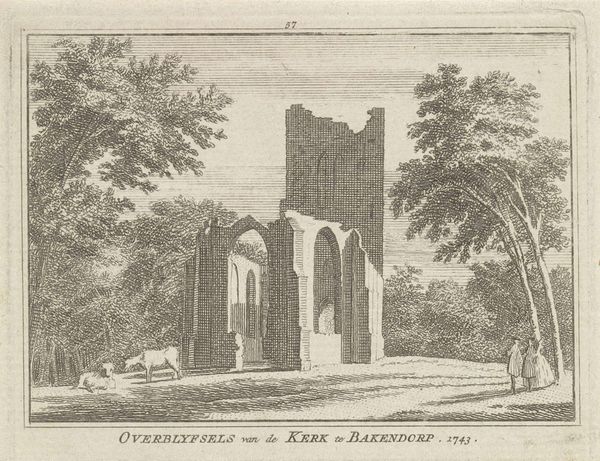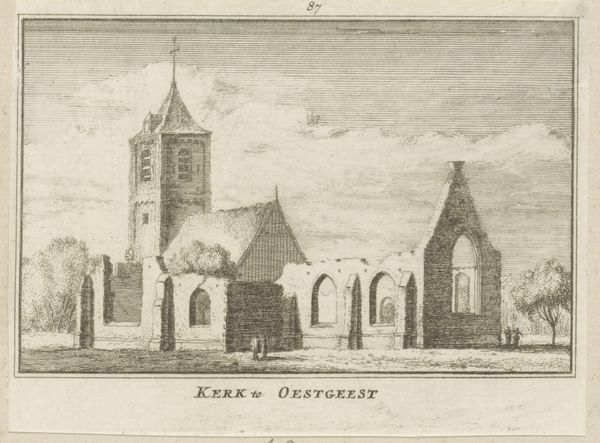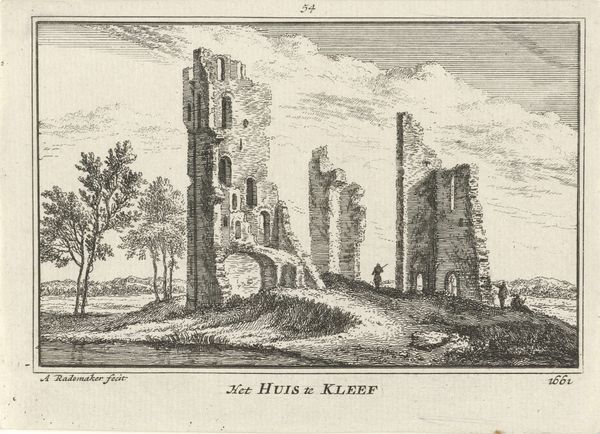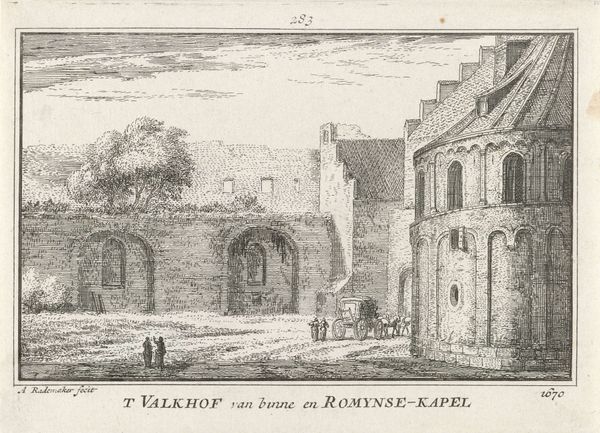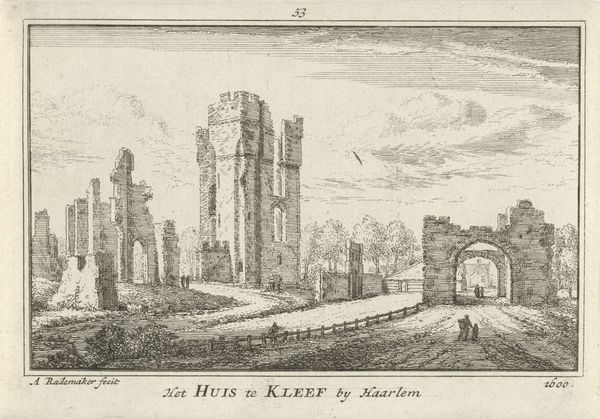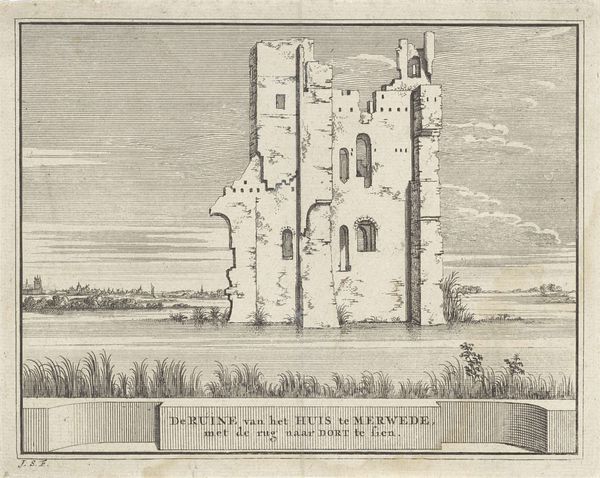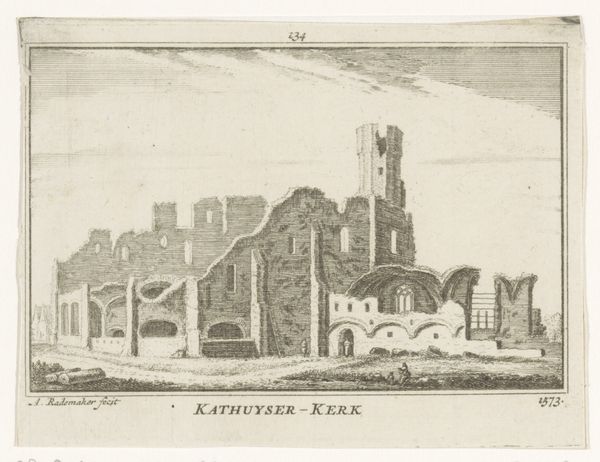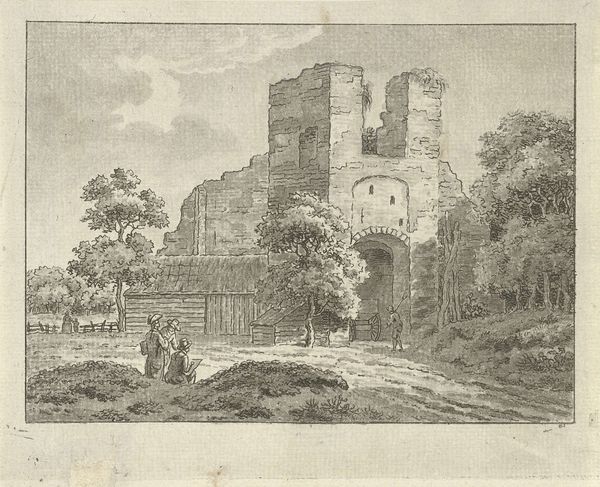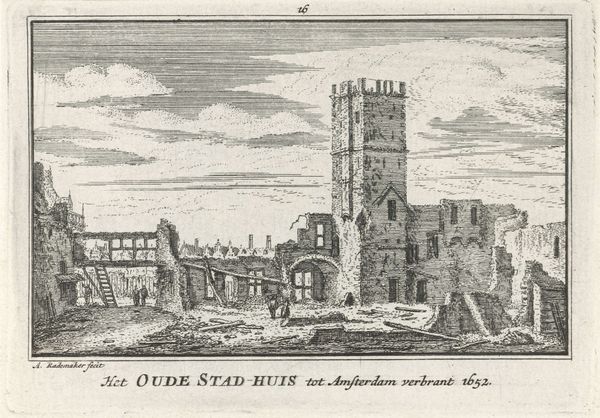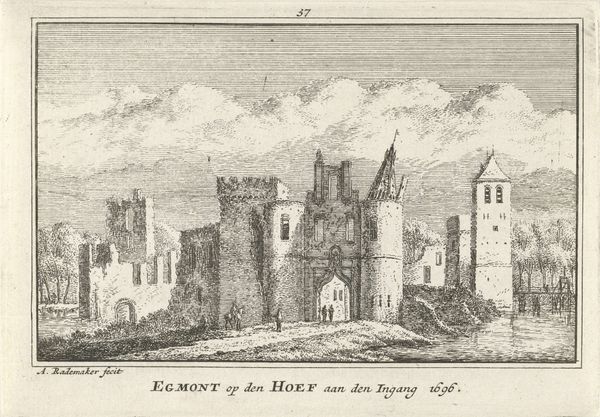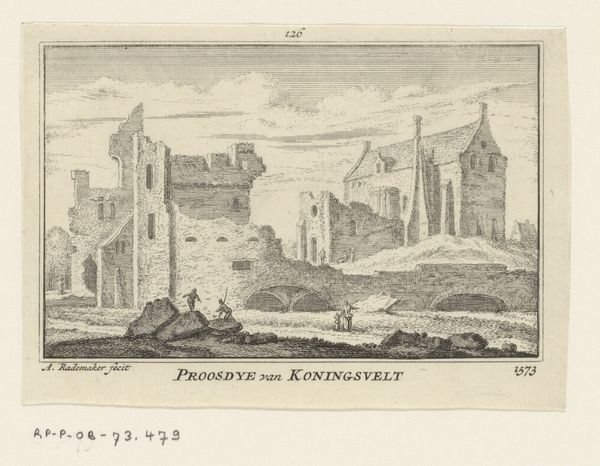
drawing, print, pen, engraving
#
drawing
#
medieval
#
baroque
# print
#
old engraving style
#
landscape
#
form
#
pen-ink sketch
#
line
#
pen work
#
pen
#
cityscape
#
history-painting
#
engraving
Dimensions: height 80 mm, width 115 mm
Copyright: Rijks Museum: Open Domain
Editor: This is Abraham Rademaker's "Gezicht op een geruïneerde kerk te Muiderberg," dating from around 1727-1733. It's an engraving, currently held at the Rijksmuseum. It really evokes a feeling of the passage of time and loss; I am very intrigued by the ruined church itself and wonder about its original symbolic importance in this landscape. What do you see in this piece? Curator: The ruins certainly speak volumes. Note the sky, almost empty, adding to a sense of neglect. Rademaker uses the crumbling church as a potent symbol. Does this scene call forth any narratives for you? I mean, consider what a ruined church might represent psychologically in the 18th century. Editor: Perhaps it's about the decline of religious power, a comment on mortality and decay? Or is it even meant to be picturesque, evoking a sort of romantic melancholy? Curator: It is undoubtedly picturesque! Consider, though: a church is meant to endure, to stand as a testament to faith. A ruined church? That introduces disruption and questions previously accepted doctrines. It is, however, interesting that we associate 'picturesque' with beauty! Think of what this signifies about a shifting aesthetic sensibility as well. Editor: So the image holds potentially contrasting meanings, then, showing disruption alongside a new kind of aesthetic appreciation of those themes of destruction and ruin. That’s fascinating, highlighting shifts in worldview and cultural memory. Curator: Precisely. We project meanings and anxieties onto these enduring images. These symbols become active participants in culture itself, evolving across centuries. Editor: I hadn't considered the psychological impact and potential cultural shifts embedded within this piece so explicitly. Thank you.
Comments
No comments
Be the first to comment and join the conversation on the ultimate creative platform.
